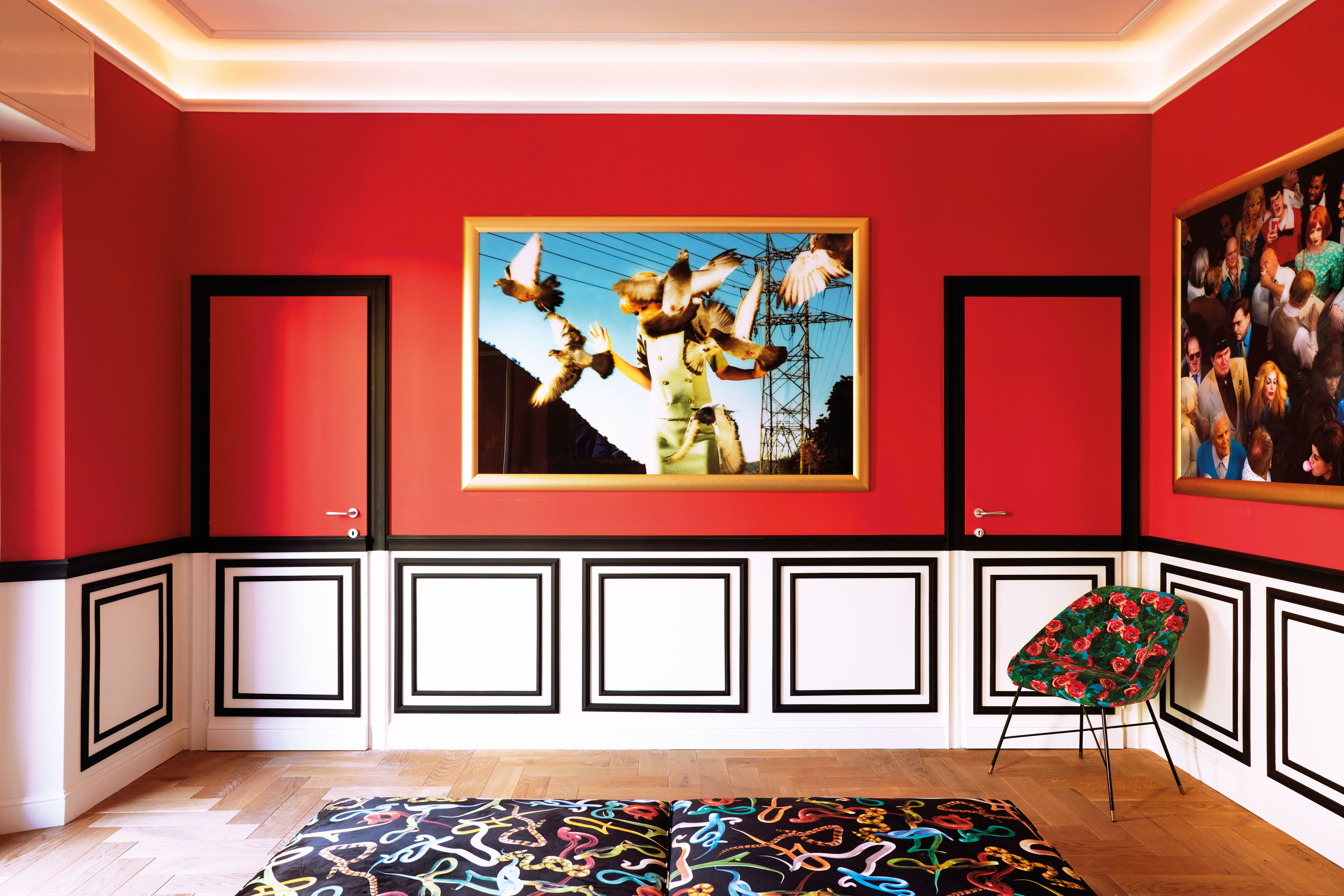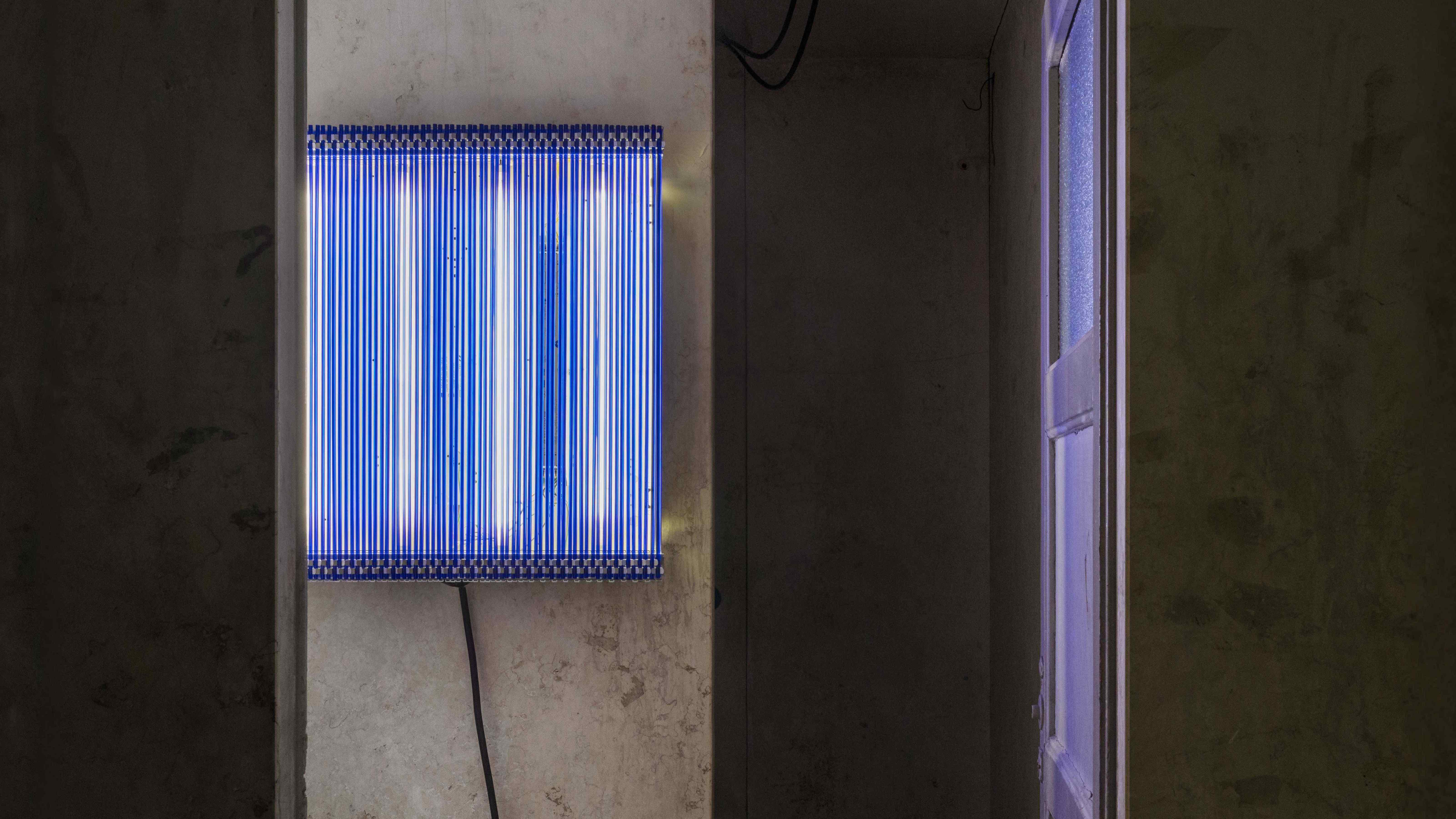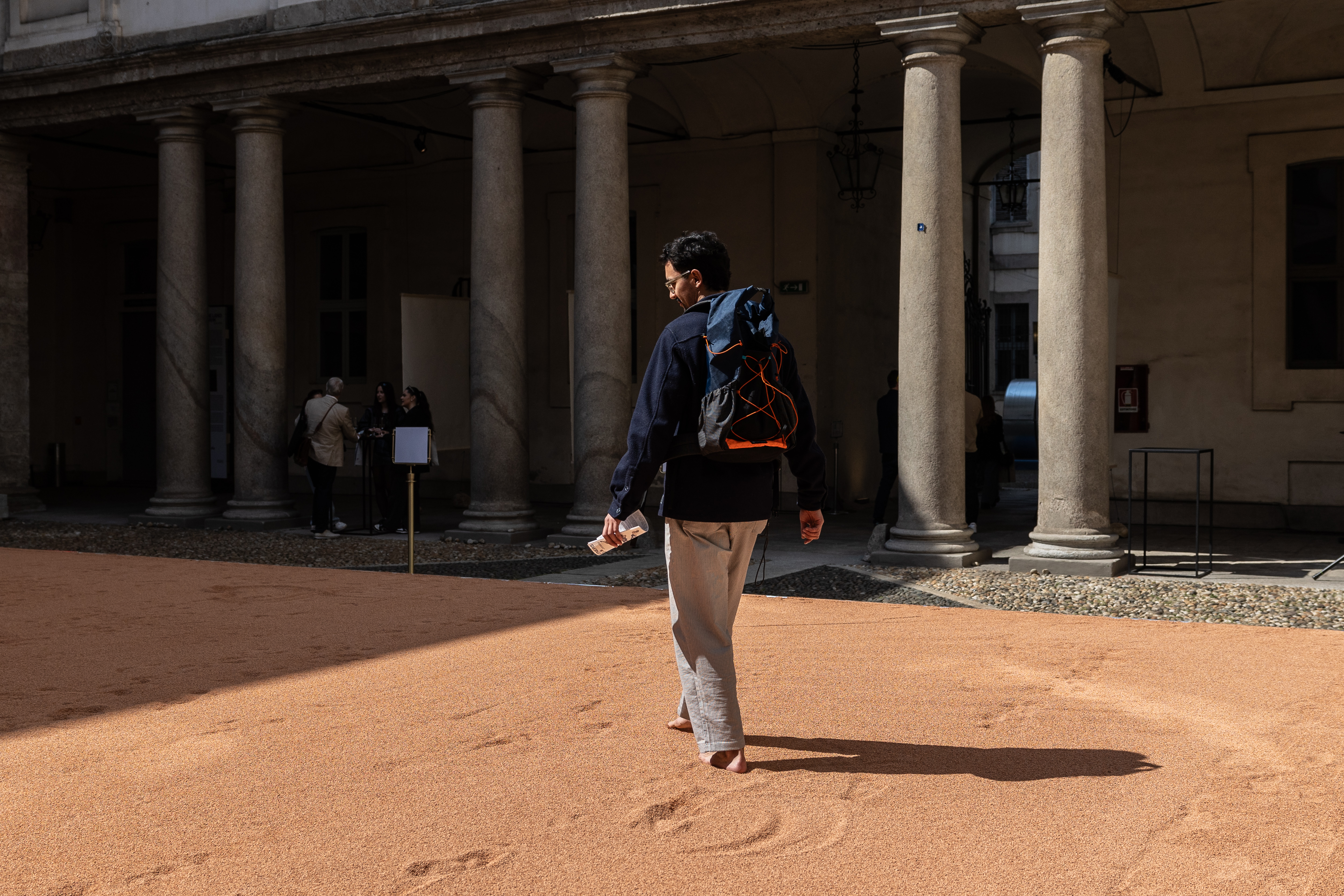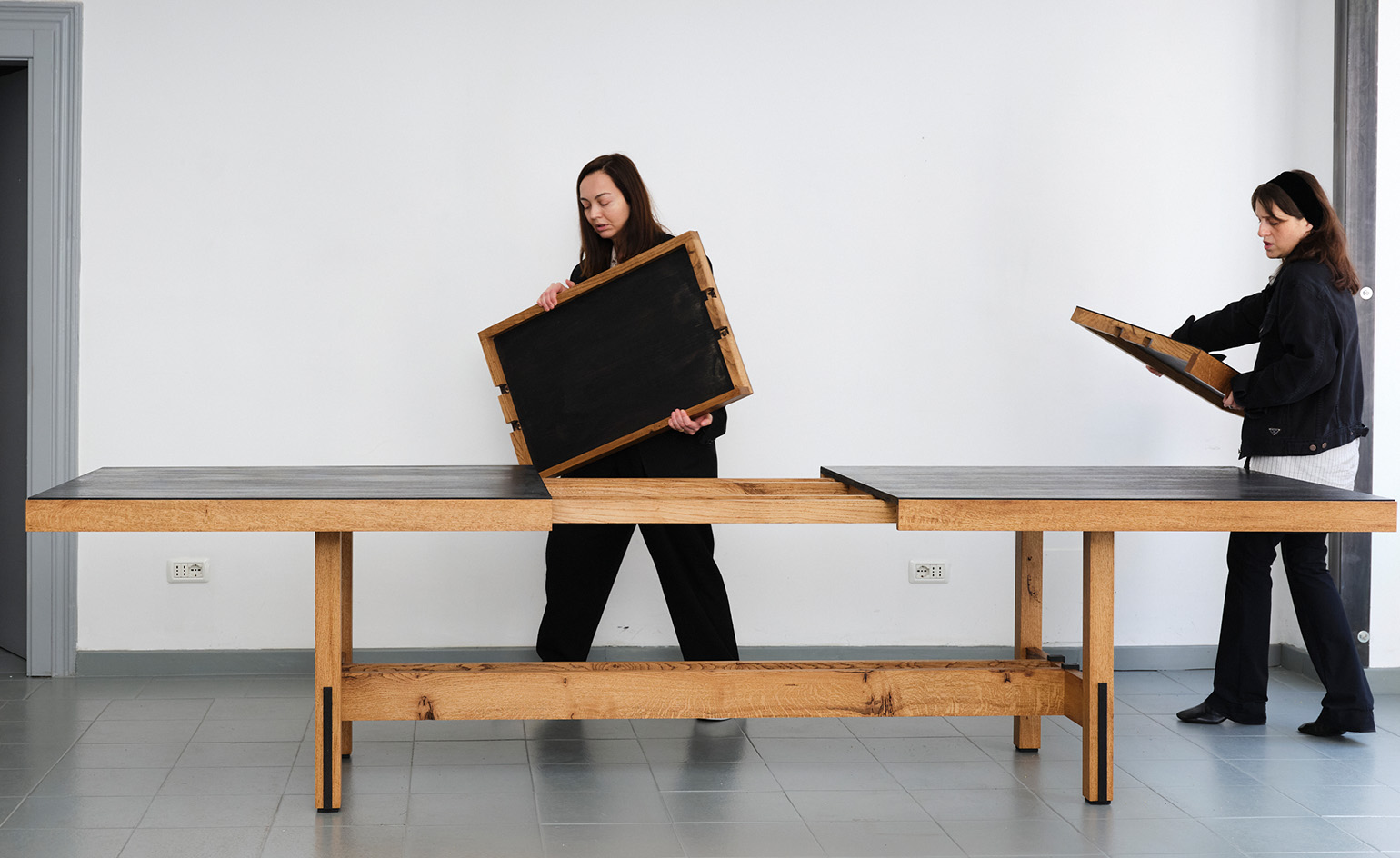Toiletpaper Apartment debuts in Milan with a 'sophisticated' Alex Prager collaboration
Toiletpaper present 'ToiletAlex PaperPrager' their new unsettling projects on the occasion of Milan Design Week 2024

During Milan Design Week 2024, Toiletpaper launched the Toiletpaper Apartment, a new space designed for exhibitions, events and 'anything' related to creativity. The Apartment is set on via Balzaretti 8, a Milanese street that has been transformed into a permanent public art installation with the brand's distinctive motifs on the buildings' facades, and is next door to 'Lipstick House', the headquarters of the irreverent editorial project founded over ten years ago by artist Maurizio Cattelan and photographer Pierpaolo Ferrari.
Inside the Toiletpaper Apartment

The ToiletAlex PaperPrager project marked the Apartment's debut, and it's the result of an encounter between the iconographic universe of Toiletpaper and the mysterious imagery of the American artist, director, and screenwriter Alex Prager.
Presenting a traditional photographic exhibition and a collaboration for another photographer is a departure from Toiletpaper's usually large-scale takeovers (which in the past have included a show at Mumbai's NMACC). ‘Compared to what we have done so far, we conceived the Toiletpaper Apartment as a place that tries to highlight one thing at a time,' says Ferrari. 'We are used to a Toiletpaper environment full of images, in an overlay of layers, a Wunderkammer or mesmerizing experience. When you insert a new element into our classic environment, the risk is that it gets a little lost in the aesthetics.’

This contrast is evident in the main room, a large hall with uncharacteristically white ceilings and black geometries. Walls are mostly black, with massive prints (twelve by Prager and twelve by Toiletpaper) with golden frames. It’s the first time that the Italian duo’s images have been framed and exhibited as more traditional gallery displays: the result is of course unsettling, but also somehow reassuring.
‘We wanted to simplify and return to a classic aesthetic. I'd describe it as impero (empire), with references to columns and squares everywhere,’ says Ferrari. ‘It works well with the scale of the photographic work that we display, too. We hit a good balance: you can still recognise the Toiletpaper world, but in a more sophisticated way.’

In the space, a giant table by artist Giampiero Romanò stands out against the wooden parquet floors with iconic Snake carpets from Toiletpaper. The top is red and decorated with golden squares that mimic the walls, while at the base, the legs appear to be gold colonnades.
The designer had already worked with Toiletpaper on a collection of 45 screens: during which he developed a new process: ‘For the table, I began with a machine that prints advertising billboards, then I had to find a way to fix them and create a special paint. The polishing alone required 30 days of work, and then I had to design the hidden structure that holds the table together. I reach the result with the invaluable assistance of dozens of local Italian artisans from Brianza.’
Wallpaper* Newsletter
Receive our daily digest of inspiration, escapism and design stories from around the world direct to your inbox.

A second room, decorated with photographs, but also with a pouf, armchair and cabinet by Seletti and Toiletpaper, is ideal for allowing people to flow, when the parties become too crowded (as the space will be primarily used for exhibitions and events). However, this is not proof that Toiletpaper wishes to leave the uncomfortable zone: ‘It’s an evolution,’ says Ferrari. ‘We are not moving to a new direction. For us, it’s always a loop.’
Cristina Kiran Piotti is an Italian-Indian freelance journalist. After completing her studies in journalism in Milan, she pursued a master's degree in the economic relations between Italy and India at the Ca' Foscari Challenge School in Venice. She splits her time between Milan and Mumbai and, since 2008, she has concentrated her work mostly on design, current affairs, and culture stories, often drawing on her enduring passion for geopolitics. She writes for several publications in both English and Italian, and she is a consultant for communication firms and publishing houses.
-
 Put these emerging artists on your radar
Put these emerging artists on your radarThis crop of six new talents is poised to shake up the art world. Get to know them now
By Tianna Williams
-
 Dining at Pyrá feels like a Mediterranean kiss on both cheeks
Dining at Pyrá feels like a Mediterranean kiss on both cheeksDesigned by House of Dré, this Lonsdale Road addition dishes up an enticing fusion of Greek and Spanish cooking
By Sofia de la Cruz
-
 Creased, crumpled: S/S 2025 menswear is about clothes that have ‘lived a life’
Creased, crumpled: S/S 2025 menswear is about clothes that have ‘lived a life’The S/S 2025 menswear collections see designers embrace the creased and the crumpled, conjuring a mood of laidback languor that ran through the season – captured here by photographer Steve Harnacke and stylist Nicola Neri for Wallpaper*
By Jack Moss
-
 Inside the Shakti Design Residency, taking Indian craftsmanship to Alcova 2025
Inside the Shakti Design Residency, taking Indian craftsmanship to Alcova 2025The new initiative pairs emerging talents with some of India’s most prestigious ateliers, resulting in intricately crafted designs, as seen at Alcova 2025 in Milan
By Henrietta Thompson
-
 Faye Toogood comes up roses at Milan Design Week 2025
Faye Toogood comes up roses at Milan Design Week 2025Japanese ceramics specialist Noritake’s design collection blossoms with a bold floral series by Faye Toogood
By Danielle Demetriou
-
 6:AM create a spellbinding Murano glass showcase in Milan’s abandoned public shower stalls
6:AM create a spellbinding Murano glass showcase in Milan’s abandoned public shower stallsWith its first solo exhibition, ‘Two-Fold Silence’, 6:AM unveils an enchanting Murano glass installation beneath Piscina Cozzi
By Ali Morris
-
 Dimoremilano and Loro Piana channel 1970s cinema in decadent Milan display
Dimoremilano and Loro Piana channel 1970s cinema in decadent Milan displayAt Milan Design Week 2025, Dimorestudio has directed and staged an immersive, film-inspired installation to present new furniture and decor for Loro Piana
By Dan Howarth
-
 In Milan, MoscaPartners presents a poetic exploration of ‘migration’
In Milan, MoscaPartners presents a poetic exploration of ‘migration’Alongside immersive work by Byoung Cho, MoscaPartners’ Milan Design Week 2025 display features an accessible exhibition path designed for visually impaired visitors
By Cristina Kiran Piotti
-
 The making of PAN and Nike’s euphoric, club-inspired collaboration at Milan Design Week
The making of PAN and Nike’s euphoric, club-inspired collaboration at Milan Design WeekAlongside a new Air Max 180 release, ‘The Suspended Hour’ display sees Berlin record label PAN imagine the unfolding of a club night, from dusk until dawn
By Craig McLean
-
 Tokujin Yoshioka’s ephemeral ice furniture is made to melt in Milan
Tokujin Yoshioka’s ephemeral ice furniture is made to melt in MilanTransparent chairs of frozen water slowly disappear during Milan Design Week 2025, in an expression of light by Japanese artist Tokujin Yoshioka
By Danielle Demetriou
-
 In Milan, Rooms Studio examines Georgia’s shifting social landscape
In Milan, Rooms Studio examines Georgia’s shifting social landscapeExpandable tables that reference recent government protests and lamps held together with ‘chewing gum’ feature in the Tbilisi-based studio’s Milan Design Week 2025 installation
By Dan Howarth